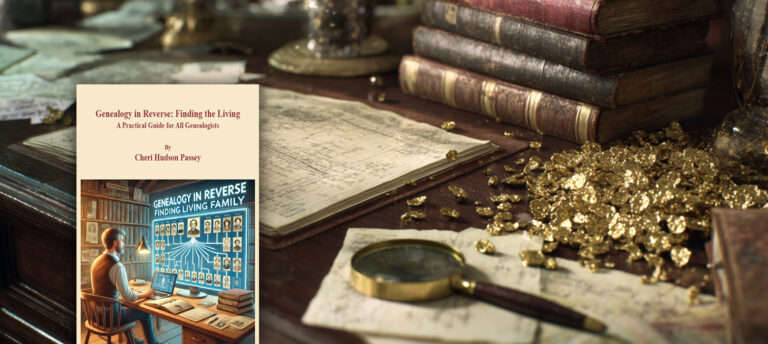
MORE NEW & EXCITING SPRING RELEASES
Announcing new spring releases! Read below for details.
[av_hr class=’short’ height=’50’ shadow=’no-shadow’ position=’center’ custom_border=’av-border-thin’ custom_width=’50px’ custom_border_color=” custom_margin_top=’30px’ custom_margin_bottom=’30px’ icon_select=’yes’ custom_icon_color=” icon=’ue808′ font=’entypo-fontello’ admin_preview_bg=” av_uid=’av-uf899f’]
Warwick County, Virginia Court Records, 1782-1843
By Richard Dunn
[av_image src=’https://genealogical.com/wp-content/uploads/product_images/2018-03-16-09-46-50.5dda697c395f98f8c4a6721748e24599bed12f98-1-223×300.jpg’ attachment=’4779′ attachment_size=’medium’ align=’right’ styling=” hover=’av-hover-grow’ link=’manually,https://library.genealogical.com/printpurchase/Xdk51′ target=’_blank’ caption=’yes’ font_size=” appearance=’on-hover’ overlay_opacity=’0.4′ overlay_color=’#000000′ overlay_text_color=’#ffffff’ animation=’no-animation’ admin_preview_bg=” av_uid=’av-tciv83′]
View Book Details
[/av_image]
Warwick County, which merged with the city of Warwick in 1952, was one of Virginia’s original shires upon its creation in 1634. (The name changed from Warwick River County to simply Warwick County in 1642-1643.) Transcriber Richard Dunn has previously compiled two volumes on the colonial records of this county (a large base volume and a 32-page supplement), referencing some 10,000 Warwick County colonists. Dunn’s continuing assault on the Warwick records takes the form of this new book, Warwick County, Virginia, Court Records, 1782-1843, In Transcription.
For his latest compilation, Mr. Dunn examined original records at the Library of Virginia and two special collections at the Swem Library of the College of William and Mary, namely, the Virginia Counties collection and the Southall Papers. Arranged by repository and thereunder chronologically, the entries derive from court records, deeds, wills, writs, and a variety of miscellaneous records.
While the contents of the transcribed records vary, the wills and deeds, in particular, establish relationships between family members and, therefore, are of great value to Warwick County descendants. In the aggregate, moreover, these transcriptions identify thousands of additional residents of Warwick County between 1782 and 1847—with many of their antecedents. Thanks to Richard Dunn’s indefatigable efforts—and the complete name index at the back of the volume–these heretofore inaccessible ancestors have not only been rescued from oblivion but are now available to us at the turn of a page.
[av_button label=’View Book Details’ link=’manually,https://library.genealogical.com/printpurchase/Xdk51′ link_target=’_blank’ size=’large’ position=’center’ icon_select=’yes’ icon=’ue84f’ font=’entypo-fontello’ color=’theme-color’ custom_bg=’#444444′ custom_font=’#ffffff’ admin_preview_bg=” av_uid=’av-rbbu43′]
[av_hr class=’short’ height=’50’ shadow=’no-shadow’ position=’center’ custom_border=’av-border-thin’ custom_width=’50px’ custom_border_color=” custom_margin_top=’30px’ custom_margin_bottom=’30px’ icon_select=’yes’ custom_icon_color=” icon=’ue808′ font=’entypo-fontello’ admin_preview_bg=” av_uid=’av-2mgisz’]
Abstracts of the Debt Books of the Provincial Land Office of Maryland:
KENT COUNTY
Volume I—Liber 27: 1733, 1734-A, 1734-B, 1734-C, 1734-D, 1735-1; Liber 28: 1736, 1737
Volume II—Liber 28: 1738, 1739, 1740; Liber 29: 1741, 1742, 1743; Liber 30: 1744, 1747
[av_image src=’https://genealogical.com/wp-content/uploads/product_images/2018-03-07-04-23-42.e534fa0e09d1b8a1ed8c104d0e6cf5b34b90b5df-1-223×300.jpg’ attachment=’4784′ attachment_size=’medium’ align=’right’ styling=” hover=’av-hover-grow’ link=’manually,https://library.genealogical.com/printpurchase/o855y’ target=’_blank’ caption=’yes’ font_size=” appearance=’on-hover’ overlay_opacity=’0.4′ overlay_color=’#000000′ overlay_text_color=’#ffffff’ animation=’no-animation’ admin_preview_bg=” av_uid=’av-ol9bcj’]
View Book Details
[/av_image]
By Vernon L. Skinner, Jr.
The Provincial Land Office of Maryland was responsible for distributing land from 1634 to 1777 on behalf of the Lord Proprietor. The Lord Proprietor’s rent rolls and debt books—the means by which the Lord Proprietor kept track of the rents due him—both commence in 1715 (though some are no longer extant). The surviving rent rolls consist of entries for each tract of land patented, the name of the person for whom the land was originally surveyed, the present owner, acreage, and rent. Alienations, or subsequent sales and leases of the piece of land, are also included. The debt books’ great value is that they enable the researcher to track land ownership over various years in cases of intestate estates, land inherited by women, and land that is not specified in a will.
Mr. Skinner’s three new volumes pertaining to Kent County debt books span the period 1733-1769, with breaks for the years 1745, 1746, 1748, and 1761-1768. The compiler presents the contents of the debt books in tabular form: liber and folio citation, with any pertinent date; name of the person paying the taxes; and name of the tract of land and amount of acreage. A number of interesting facts emerge from the Kent County debt books, including that the county had erected a free school by 1735 and that the towns of Chestertown and Georgetown were established communities in the county by 1738. A number of Kent County landowners actually lived in other Maryland counties, as well as places in Delaware, Pennsylvania, Massachusetts, England, and Barbados.
Search Genealogical.com to learn more about the contents of the other counties currently available in the Abstracts of the Debt Books of the Provincial Land Office of Maryland series: Talbot, Dorchester, Worcester, Somerset, Frederick, Prince George’s, Charles, and St. Mary’s. All volumes in this series are individually indexed and are in paperback.
[av_one_third first av_uid=’av-29bp77′]
[av_button label=’View Kent County Vol. I’ link=’manually,https://library.genealogical.com/printpurchase/o855y’ link_target=’_blank’ size=’large’ position=’center’ icon_select=’yes’ icon=’ue84f’ font=’entypo-fontello’ color=’theme-color’ custom_bg=’#444444′ custom_font=’#ffffff’ admin_preview_bg=” av_uid=’av-ld9fk3′]
[/av_one_third]
[av_one_third av_uid=’av-iw3cab’]
[av_button label=’View Kent County Vol. II’ link=’manually,https://library.genealogical.com/printpurchase/yBEMb’ link_target=’_blank’ size=’large’ position=’center’ icon_select=’yes’ icon=’ue84f’ font=’entypo-fontello’ color=’theme-color’ custom_bg=’#444444′ custom_font=’#ffffff’ admin_preview_bg=” av_uid=’av-gpju5v’]
[/av_one_third]
[av_one_third av_uid=’av-f3qv1f’]
[av_button label=’View Kent County Vol. III’ link=’manually,https://library.genealogical.com/printpurchase/34ZdK’ link_target=’_blank’ size=’large’ position=’center’ icon_select=’yes’ icon=’ue84f’ font=’entypo-fontello’ color=’theme-color’ custom_bg=’#444444′ custom_font=’#ffffff’ admin_preview_bg=” av_uid=’av-efdl8z’]
[/av_one_third]
[av_hr class=’short’ height=’50’ shadow=’no-shadow’ position=’center’ custom_border=’av-border-thin’ custom_width=’50px’ custom_border_color=” custom_margin_top=’30px’ custom_margin_bottom=’30px’ icon_select=’yes’ custom_icon_color=” icon=’ue808′ font=’entypo-fontello’ admin_preview_bg=” av_uid=’av-bwumpv’]
Scottish Trade With Colonial Charleston, 1683-1783
By David Dobson
[av_image src=’https://genealogical.com/wp-content/uploads/product_images/2018-04-09-10-46-15.0958832a59c6fd9bc4d2aa8399afe276fee06d1e-1-223×300.jpg’ attachment=’4786′ attachment_size=’medium’ align=’right’ styling=” hover=’av-hover-grow’ link=’manually,https://library.genealogical.com/printpurchase/Xv0Ek’ target=’_blank’ caption=’yes’ font_size=” appearance=’on-hover’ overlay_opacity=’0.4′ overlay_color=’#000000′ overlay_text_color=’#ffffff’ animation=’no-animation’ admin_preview_bg=” av_uid=’av-a81uf7′]
View Book Details
[/av_image]
The colonial city of Charleston, South Carolina, grew to become the center of commerce for the southern region of British North America, comprising South Carolina, much of North Carolina, and Georgia. This region had links with the West Indies, Africa, the lower Mississippi valley, and latterly Florida. It largely produced, processed, and exported all the major colonial raw materials, timber, furs, sugar, rice, indigo, and–to a small extent–tobacco.
Drawing upon original sources found in both Scotland and Charleston, David Dobson here identifies the Scots merchants doing business in Charleston as well the merchants in Scotland with whom they traded. Also covered are the quantities and types of goods bought and sold; the importance of family connections and networking in the success of Scotland’s trading ventures, both in financial terms and the wider commercial activities generated; the role of ship-building; Scottish emigration, both voluntary and involuntary; and other factors that characterized the Charleston-Scotland nexus.
As eighteenth-century South Carolina was unarguably an economy based on slavery, it was virtually impossible for any resident there not to be either directly or indirectly involved in the use of slave labor. Chapter Five of this work examines the extent to which–and in which capacities–Scots participated in the slave trade between Africa, the West Indies, and South Carolina. It considers the selection of slaves; their transportation, sale, and eventual employment in the colony; and the available evidence of the number of slaving voyages in which the Charleston Scots were involved, the numbers of slaves landed in Charleston, and the locations in Africa or the West Indies from which they came.
Another chapter deals with colonial produce exported by Scots merchants from Charleston bound for Scotland and Europe. It examines the items despatched, either raw materials or semi-processed goods that Charleston was in a position to export, and the extent to which they were locally produced within South Carolina or brought in from elsewhere in America, the colonies in and around the Caribbean, or even Africa. The chapter shows the markets that these merchants supplied and how the restrictions of the Navigation Acts were set aside to enable commerce to expand. It also covers the impact of international rivalry and periods of hostilities on the Charleston trade.
Most of Dobson’s original research for Scottish Trade with Colonial Charleston was conducted in Charleston, London, and Edinburgh. The main sources were the library of the South Carolina Historical Society in Charleston, the National Archives (formerly the Public Record Office) in London, and National Records of Scotland in Edinburgh (formerly the Scottish Record Office). The State Library in Raleigh, North Carolina, especially its massive British Colonial Records collection, was another major source of information.
[av_button label=’View Book Details’ link=’manually,https://library.genealogical.com/printpurchase/Xv0Ek’ link_target=’_blank’ size=’large’ position=’center’ icon_select=’yes’ icon=’ue84f’ font=’entypo-fontello’ color=’theme-color’ custom_bg=’#444444′ custom_font=’#ffffff’ admin_preview_bg=” av_uid=’av-yqbeb’]
[av_hr class=’short’ height=’50’ shadow=’no-shadow’ position=’center’ custom_border=’av-border-thin’ custom_width=’50px’ custom_border_color=” custom_margin_top=’30px’ custom_margin_bottom=’30px’ icon_select=’yes’ custom_icon_color=” icon=’ue808′ font=’entypo-fontello’ admin_preview_bg=” av_uid=’av-7fhy2b’]
The People of Fife, 1600-1799
By David Dobson
[av_image src=’https://genealogical.com/wp-content/uploads/product_images/2018-03-16-09-46-22.ab8c04cd8033c7515929accb1e9087a611762672-1-223×300.jpg’ attachment=’4788′ attachment_size=’medium’ align=’right’ styling=” hover=’av-hover-grow’ link=’manually,https://library.genealogical.com/printpurchase/ozlKG’ target=’_blank’ caption=’yes’ font_size=” appearance=’on-hover’ overlay_opacity=’0.4′ overlay_color=’#000000′ overlay_text_color=’#ffffff’ animation=’no-animation’ admin_preview_bg=” av_uid=’av-5o6hvn’]
View Book Details
[/av_image]
During the period 1600-1799, the economy of County Fife, situated on Scoland’s East Coast, was based on exports of fish, coal, salt, agricultural produce, linen, and other textiles. Its seafaring communities were engaged in fishing and whaling, with trading voyages to ports in Scandinavia, the Baltic lands, Germany, the Netherlands, France, Spain, and the Americas. These shipping links led in due course to emigration. Among such emigrants were John Cunningham, who led a Danish expedition to Greenland and Labrador in 1605, later settling in Norway; General John Forbes, who fought in the French and Indian War and is buried in Philadelphia; and Samuel Greig, 1735-1788, the founder of the Russian Navy. Another notable son was Adam Smith, 1723-1790, economist and author of The Wealth of Nations, who was born in Kirkcaldy.
This book is based on research into primary source material, both manuscript and printed, largely found in archives in both Fife and in Edinburgh. Dr. Dobson’s sources included the Kirkcaldy burgess rolls, the Register of the Privy Council of Scotland, and newspapers such as the Edinburgh Advertiser and Edinburgh Evening Courant. While the contents of the 2,000-plus entries of Fife inhabitants varies considerably, the following sample conveys an idea of what researchers may hope to find in the work as a whole:
WEST, JAMES, born 11 June 1791, son of John West in Kirkcaldy, emigrated to America in 1815, settled in Wood County, West Virginia, died in Fox Township, Ohio, in 1851. [OVG.125]
[av_button label=’View Book Details’ link=’manually,https://library.genealogical.com/printpurchase/ozlKG’ link_target=’_blank’ size=’large’ position=’center’ icon_select=’yes’ icon=’ue84f’ font=’entypo-fontello’ color=’theme-color’ custom_bg=’#444444′ custom_font=’#ffffff’ admin_preview_bg=” av_uid=’av-48g54j’]
[av_hr class=’short’ height=’50’ shadow=’no-shadow’ position=’center’ custom_border=’av-border-thin’ custom_width=’50px’ custom_border_color=” custom_margin_top=’30px’ custom_margin_bottom=’30px’ icon_select=’yes’ custom_icon_color=” icon=’ue808′ font=’entypo-fontello’ admin_preview_bg=” av_uid=’av-3a5cyr’]
Do you have questions about our newest book releases? Please leave them in the comments section below!



